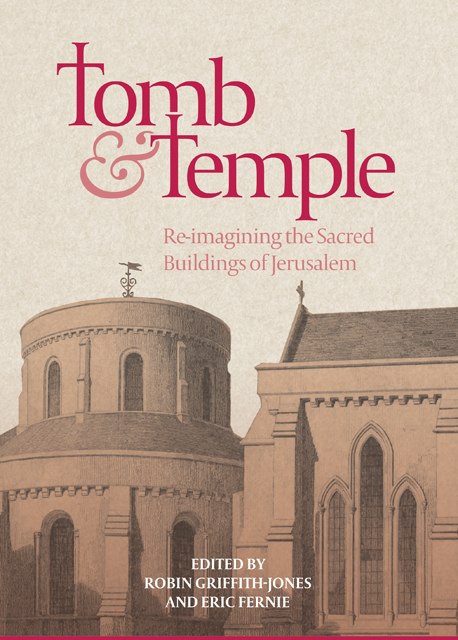Book contents
- Frontmatter
- Contents
- Illustrations
- Preface
- Contributors
- Abbreviations
- Editors’ Note
- Introduction
- Part I Re-presenting Jerusalem
- Part II The Church of the Holy Sepulchre
- Part III The Noble Sanctuary / The Temple Mount
- Part IV The Orthodox Churches
- Part V Round Churches in the West
- Appendix: The Knights’ Effigies: Newly Discovered Drawings by John Guillim, c. 1610
- Epilogue
- Index
- Already Published
22 - The Temple Church in the Crusades
Published online by Cambridge University Press: 17 January 2023
- Frontmatter
- Contents
- Illustrations
- Preface
- Contributors
- Abbreviations
- Editors’ Note
- Introduction
- Part I Re-presenting Jerusalem
- Part II The Church of the Holy Sepulchre
- Part III The Noble Sanctuary / The Temple Mount
- Part IV The Orthodox Churches
- Part V Round Churches in the West
- Appendix: The Knights’ Effigies: Newly Discovered Drawings by John Guillim, c. 1610
- Epilogue
- Index
- Already Published
Summary
It is a commonplace that twelfth-century devotion became more vividly and immediately linked with the pathos of Jesus’ life and death on earth. This may have been fostered by – and was certainly consonant with – the accessibility of the holy sites in Jerusalem. In this chapter we turn to the more particular circumstances of the Templars and of their Marian rotunda in London. What difference and how much did it make to whom that the Templars’ nave in London was round? Within the first decades of its use (to go no further) it will have been seen by the London Templars, their priests, sergeants and servitors, some of whom will have been to Jerusalem, others not; by royal, diplomatic and political visitors, and Templars from other English and continental houses; by clients of the Templars’ banking services; by pilgrims to the church and to its tombs; by members of crafts and trades doing business in and around the Temple and using its access to the river; by the Temple’s own tenants, doing business with their landlords; and by local lay people using the church – to make and witness oaths, for instance – as they used other churches. Pilgrim-visitors could win an indulgence from being there. Nicole Hamonic, in the present volume, brings back to light the indulgences recorded in Cotton Nero E VI, which show no clear link to the Holy Land.
In its direct architectural links with Jerusalem, the Temple was not alone in London. Catherine Hundley evokes in her chapter other recollections of the Sepulchre in and around the city: at the Old Temple; at the Hospitallers’ rotunda in Clerkenwell; and at the parish church – with a large parish – of St Sepulchre. London did not generate – as Winchester did – an ordered constellation of churches recalling the sites and layout of Jerusalem; but Jerusalem, the Holy Land and their guardians were a pervasive presence.
After the disastrous Second Crusade (1145–49), donations to the Order were falling. The Templars needed a bold statement to impress dignitaries living in or visiting London, to confirm the Order’s standing and to attract further benefactions.
- Type
- Chapter
- Information
- Tomb and TempleRe-imagining the Sacred Buildings of Jerusalem, pp. 429 - 456Publisher: Boydell & BrewerPrint publication year: 2018
- 1
- Cited by

